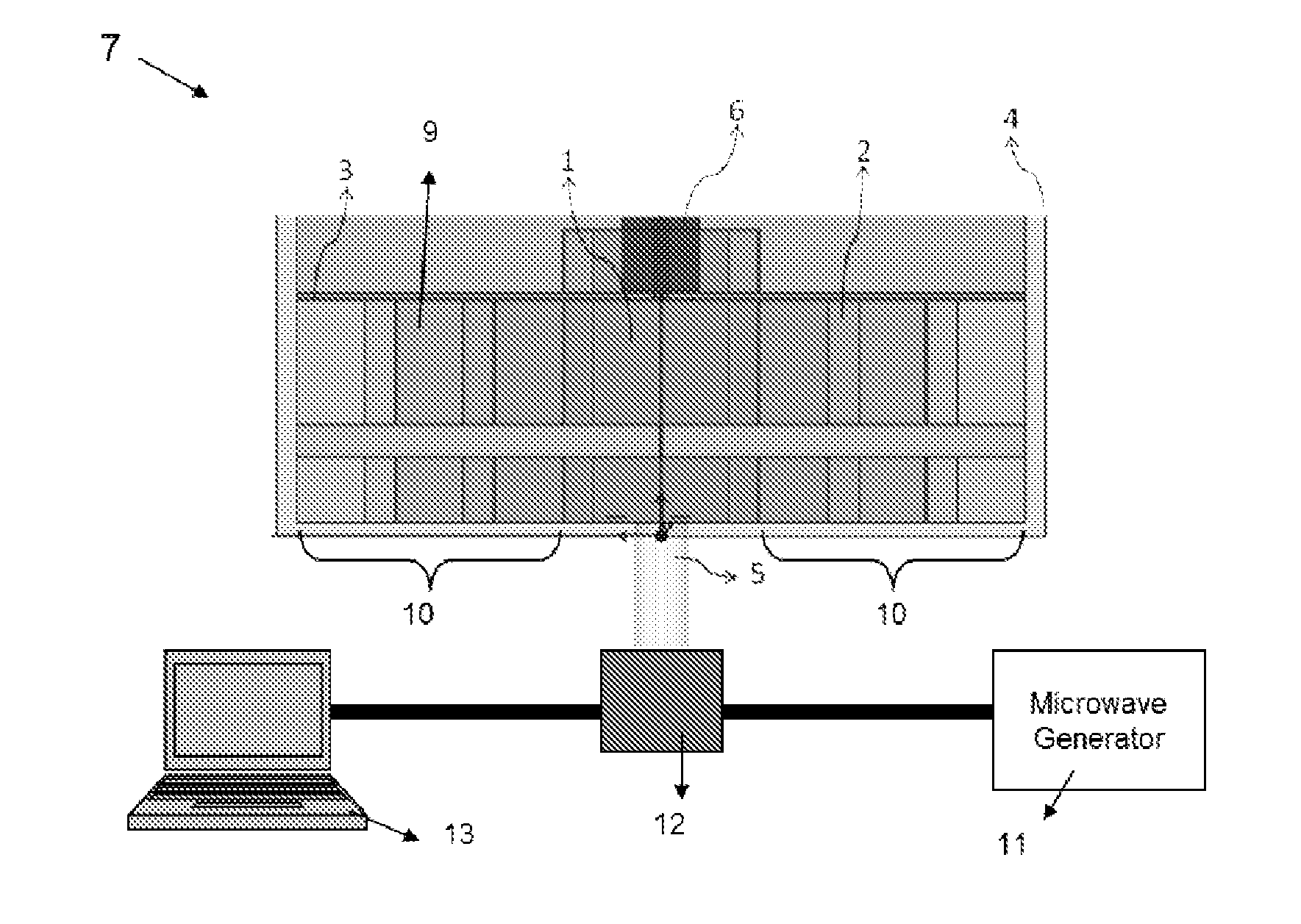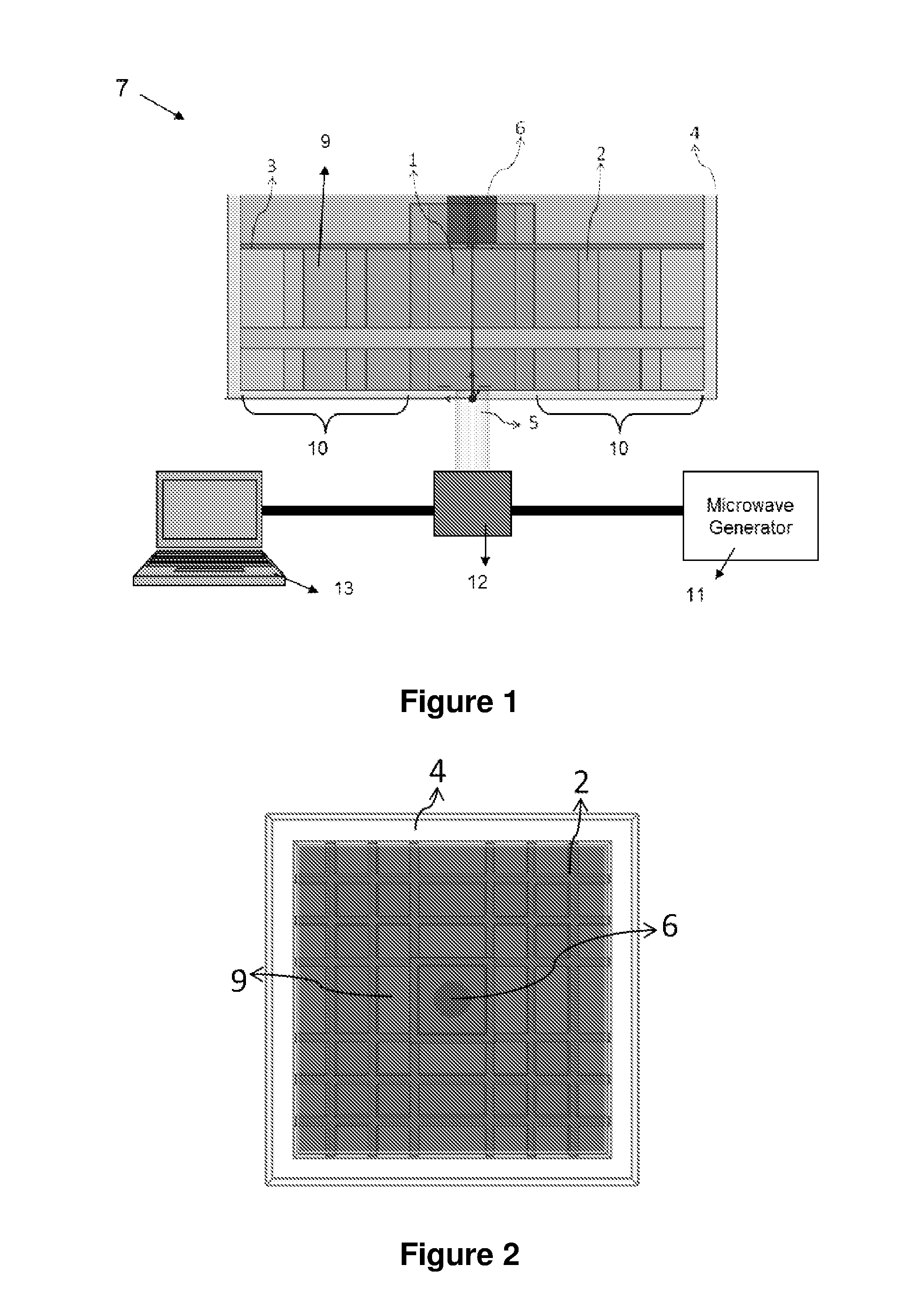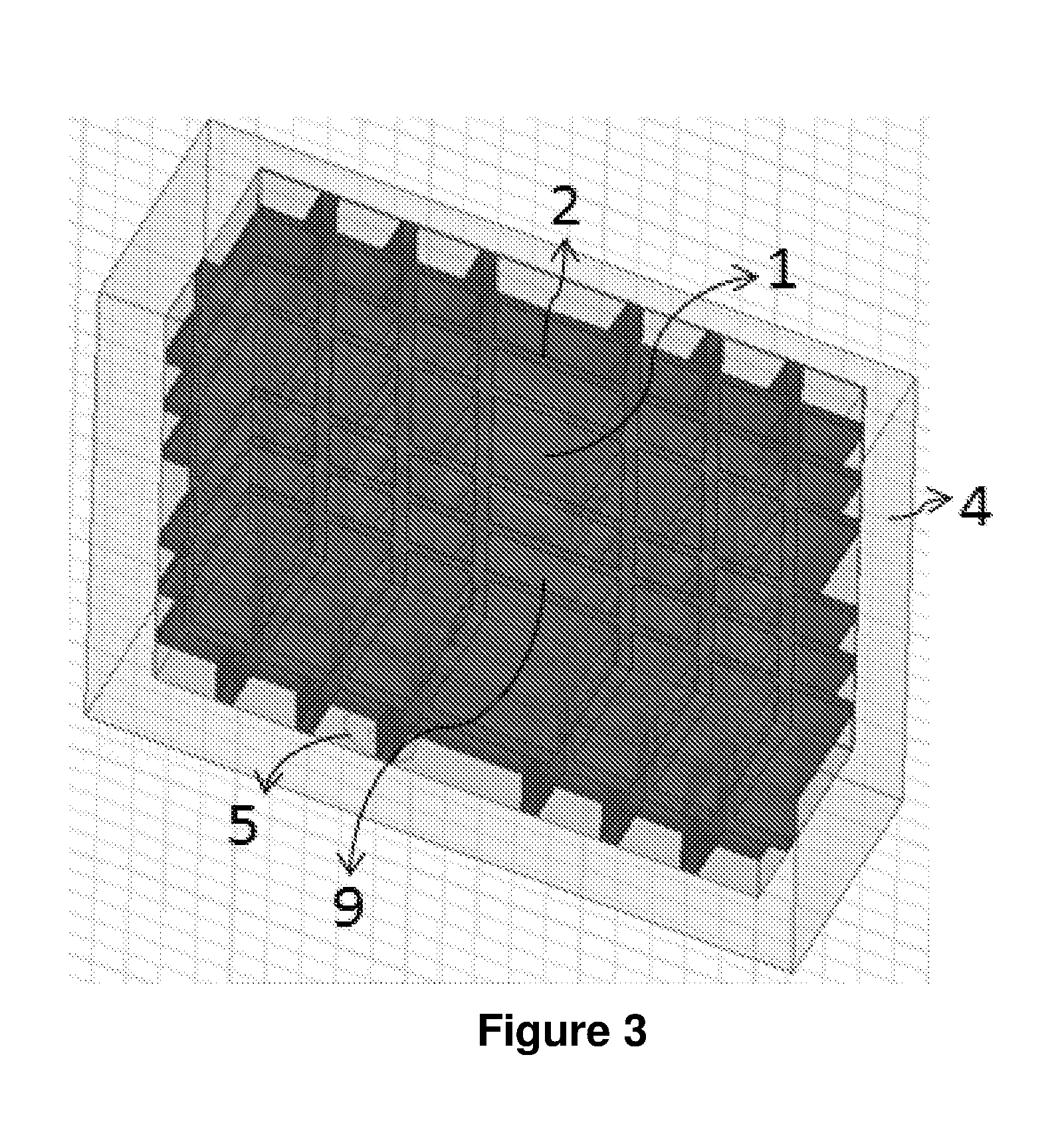Microwave cavity sensor
a cavity sensor and microwave technology, applied in the direction of instruments, nuclear magnetic resonance analysis, reradiation, etc., can solve the problems of corrosion monitoring, metal corrosion, and limited space available for multiphase meters in off shore christmas tree production systems
- Summary
- Abstract
- Description
- Claims
- Application Information
AI Technical Summary
Benefits of technology
Problems solved by technology
Method used
Image
Examples
Embodiment Construction
[0033]FIG. 1 shows a cross section of a high Q Bragg reflector based open ended microwave resonator sensor 7. The sensor 7 is dielectric structure having a waveguide 1 and a concentrator 10 surrounding the waveguide 1. One end of the waveguide is connected to a microwave generator 11 via a SMA connector 5, so that microwaves can be injected along a longitudinal axis of the waveguide. The opposite end along the longitudinal axis of the waveguide is terminated with a dielectric reflector 3 of defined thickness. The waveguide 1 extends beyond the dielectric reflector to form a sample chamber 6. The waveguide 1 has a resonant wavelength of half the excitation wavelength λ / 2. The dielectric reflector has a thickness of at least λg / 20 where λg is the wavelength of the excited electromagnetic wave in the dielectric. The function of the dielectric reflector is to maximise electromagnetic field intensity in the sample chamber 6. In practice, the dielectric reflector should be made of a diele...
PUM
| Property | Measurement | Unit |
|---|---|---|
| distance | aaaaa | aaaaa |
| relative dielectric constant | aaaaa | aaaaa |
| relative dielectric constant | aaaaa | aaaaa |
Abstract
Description
Claims
Application Information
 Login to View More
Login to View More - R&D
- Intellectual Property
- Life Sciences
- Materials
- Tech Scout
- Unparalleled Data Quality
- Higher Quality Content
- 60% Fewer Hallucinations
Browse by: Latest US Patents, China's latest patents, Technical Efficacy Thesaurus, Application Domain, Technology Topic, Popular Technical Reports.
© 2025 PatSnap. All rights reserved.Legal|Privacy policy|Modern Slavery Act Transparency Statement|Sitemap|About US| Contact US: help@patsnap.com



